Prescriptive-Led Growth
The new A.I.-powered methodology transforming spatial success
Table of contents
Prescriptive-Led Growth
The evolution of Location Intelligence
Prescriptive-Led growth is…
How is this possible? The powerful prescriptive process triple-threat
What companies can solve with Prescriptive-Led Growth
Go from good enough to great with Prescriptive-Led Growth
Chapter 1
Prescriptive-Led Growth
As brick and mortar brands face a future of unprecedented competition, changing consumer behavior and cost pressures, they find themselves at a crossroads: Will they choose the right path to retail success, or fall behind on the journey?
To discover what direction leads towards smart market growth, retailers must address a vast array of complex questions. These range from “How many locations can I open in a market?” and “Who and where are my customers?” to “What will the impact on sales be if a second location opens five miles away?” and “What specific trade area offers the most revenue opportunities?”
Over the decades, the techniques used to answer these questions have evolved, but they have never delivered the accuracy and speed necessary to be truly transformative. In addition, retail brands have traditionally lacked the power to solve their own location conundrums, ending up in a state of analysis paralysis.
Now, nearly 20 years after the last go-to market strategy was introduced to retail, the future of location intelligence has arrived.
Thanks to data science and the power of artificial intelligence (A.I.) and machine learning, the days of educated guesses are over. The very fabric of location intelligence is changing, and now highly accurate, data-driven answers can empower brands in-house.
The paradigm shift disrupting the retail landscape is called Prescriptive-Led Growth, defined as instances when A.I. driven technology suggests location-based decisions through an empowering user experience, solving for complex spatial goals without the need for traditional consulting intervention.
Brands that embrace and adopt the Prescriptive-Led Growth methodology can confidently control their own location destiny, based on their priorities and goals, with the flexibility and speed that’s required today. They instantly gain the advantage over competitors that stick with old, slow, “good enough” consultative approaches.
Chapter 2
The Evolution of location intelligence
- 1970s
In-person manual analysis
When commercial brokers came into the real estate scene in the 1970s, the most advanced location technology at the time was a simple clicker. Someone actually stood on the street manually counting cars and oil stains in parking lots. Brands made the most of this data.
- 1980s
U.S. demographics
A decade later, the use of data across retail and location analysis was born. Aggregated U.S. census data across geographies was captured and combined with manual retail analysis to help brands and brokers make better location-based decisions.
- 1990s
Descriptive GIS analytics
With the arrival of basic desktop GIS (geographic information systems), companies began to offer brands the ability to take aggregated and packaged data, visualize it on a map and report on that data in various formats. For that moment in time, it was the latest in what technology allowed and was a big step forward in terms of location intelligence.
- 2000s
Predictive Consulting
In the most recent big shift in location intelligence, predictive consultants began to take brand-level data, put it through a highly consultative process, and after 3-12 months provide a deliverable based on a regression model with fixed variables across all markets. While this method took brands farther than they had gotten before, this slow, expensive process lacked transparency, provided results that quickly went stale and offered deliverables typically based on simplistic statistical models.
- Modern Day
Prescriptive-Led Growth
This is a massive shift that puts control firmly back into the hands of brands. This methodology, pioneered by SiteZeus, provides an in-house solution for organizations to solve their own challenges around market optimization. Brands bring their own proprietary knowledge and expertise and combine it with third-party data that then runs through an A.I. engine to provide actionable results. This is true decision technology.
Top brands like Burger King, Vitamin Shoppe, Travel Centers of America and Subway are already embracing this new methodology, but it is available and offers the same opportunities to all.
Chapter 3
Prescriptive-Led Growth is…
To be clear, Prescriptive-Led Growth is not simply about A.I. and machine learning. It’s a completely new experience that’s comprised of these six defining factors.
-
Prescriptive
(First and foremost). The technology suggests, advises and prescribes decisions based on a predictable outcome for any location-based query.
-
Empowering
Brands are completely in control with Prescriptive-Led Growth. They enjoy ownership of building and deploying their custom models. The days of waiting are over, as are the days of paying for model enhancements and iterations. Instead, today you can test theories with 24/7 access.
-
Dynamic
In the past, with the use of predictive consultants, brands typically had to wait for several months to see a version of their model. By contrast, a Prescriptive-Led Growth solution has the ability to rebuild the model at any point, deploying analytics within minutes. Brands can toggle data points to get immediate results in sales projections and portfolio optimization impact metrics.
Want to add a new data set? Purchase one and press “rebuild.” Want to add competition to your model? No problem.
-
Explainable
Most likely, brands have not fully understood what predictive consultants were doing behind the curtain. That solution offered a “black box” approach that lacked any transparency. With a Prescriptive-Led Growth solution, brands can see how accurate their model is at any time, understand the variables that drive the model, and see what variables impact sales projections and by how much. This provides a “glass box” experience that is explainable, interpretable and transparent.
-
Frictionless
When making location-based decisions, getting it right — fast — is a must, which means providing the most seamless experience. A Prescriptive-Led Growth solution is easy to use. It offers easy-to-share insights, with unlimited testing and reports. It provides approachable, no-wait customer support.
-
Disruptive
The Prescriptive-Led Growth methodology is radically new and most appealing to brands who embrace innovation.
To help bridge the gap between the old way and the new way of managing growth, SiteZeus offers a proof of concept. Now brands can quite literally test drive a model, with actual performance data, in a new environment, prior to subscribing.
Chapter 4
How is this possible? The powerful prescriptive process triple-threat
So how does a Prescriptive-Led Growth solution work? There are three pillars that make Prescriptive-Led Growth significantly different from previously-deployed processes: These are data, method and delivery.
I. The data: proprietary brand data combined with modern data sets
In the era before Prescriptive-Led Growth, brands typically provided their performance data to consultants. Laborious manual surveys were set in motion, and several months later a model was delivered. When it needed to be rebuilt, the cycle started all over again. These fragmented models would often be contradictory — and quickly stale, to boot.
With a Prescriptive-Led Growth solution, brands can subscribe to data sets and rebuild their model as many times as they want, within minutes. Store-level data is collected by virtual surveys that operators themselves deploy. Modern data sets can be purchased à la carte, from a universal data exchange. The data is effortlessly combined and applied to one single global model.
Why it works
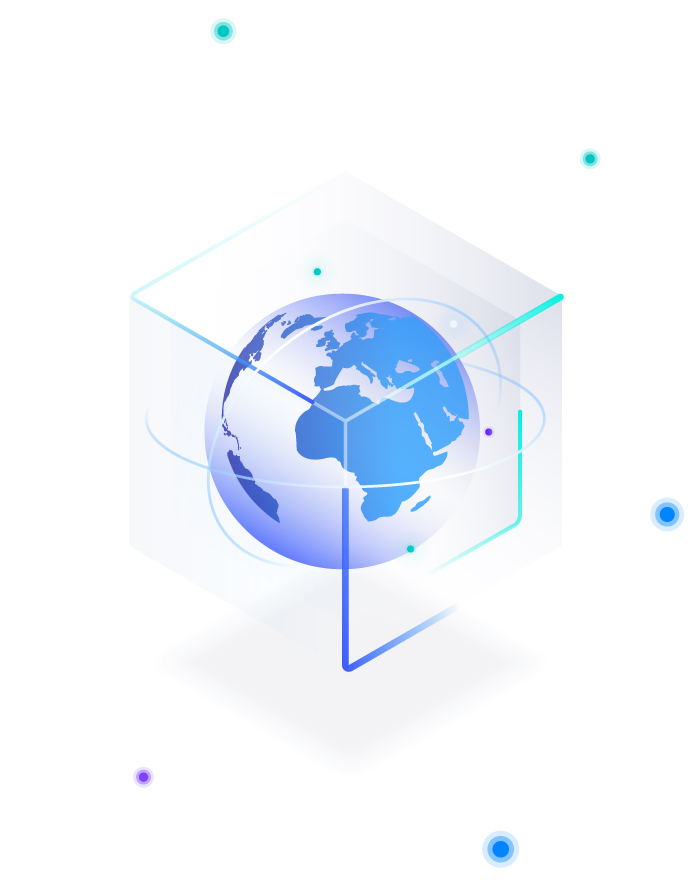
- Data exchange. With a Prescriptive-Led Growth solution, data can be purchased with the click of a button. Brands can pick and choose the mix they want, dependent on their organizational goals.
- Granularity. Prescriptive-Led Growth solutions use massive, modern data sets that get extremely granular, down to individual smartphone devices that show where someone works and rests, as well as contextual visits.
- Organic. Prescriptive-Led Growth solutions leverage modern data sets that are organically produced, rather than force-fit to tell a particular story.
II. The method: A.I. and machine learning
Predictive consultants rely on what is now outdated methodology, using regression models with well-known limitations. Now, thanks to A.I. and machine learning methodologies, Prescriptive-Led Growth brands can deploy modeling that is capable of consuming hundreds of thousands of data points. A brand’s own team can then leverage these prescribed insights to make science-based decisions.
Why it works
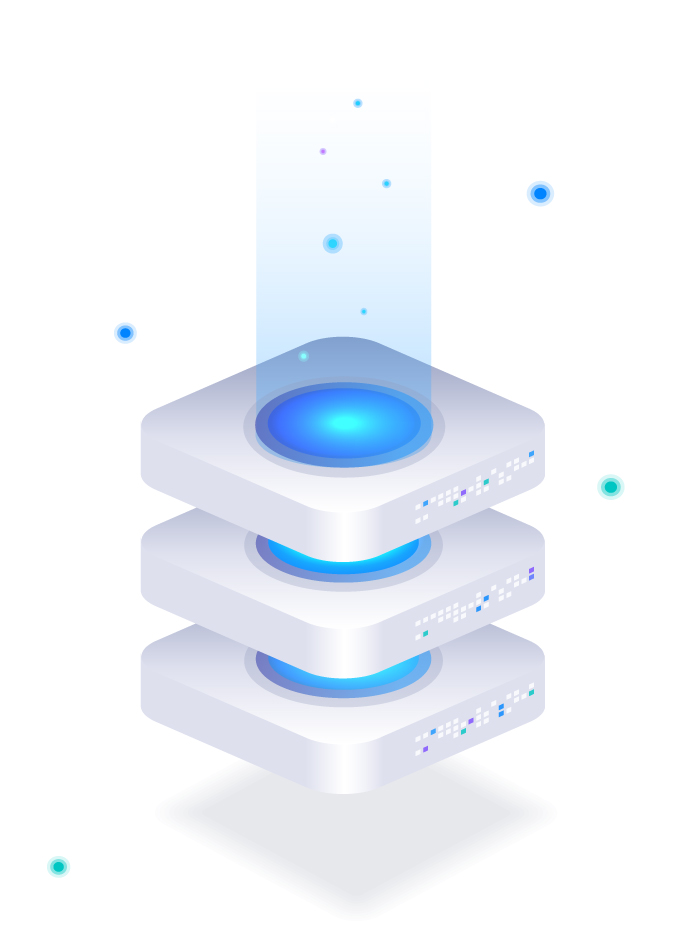
- A.I. Prescriptive-Led Growth solutions are built on proprietary A.I. This technology provides instant, highly-granular, intuitive results that power the decisions that drive brand success.
- Glass box vs. black box. Transparency translates to trust, and that’s why Prescriptive-Led Growth brands always know how accurate their models are. They can see the variables that impact the models, as well as the variables that impact each individual sales projection.
- Insource vs. outsource. A Prescriptive-Led Growth solution should empower team members inside the organization. This creates greater expertise within a brand, and although complex data science does go on in the background, a user-friendly experience allows that to be driven with finesse.
III. The Delivery: Instant deployment and complete model control
No longer do brands need multiple models to solve for different solutions. No longer do they need to hand over data to consultants just to receive deliverables months later, with contradictory results. Prescriptive-Led Growth offers brands a dynamic model that is built in as little as a day and can easily be refreshed with new information to adapt to changing internal and external market factors. Automated collection methods mean location data is gathered quickly and efficiently, while best-in-class support means implementation is painless and seamless. Rather than taking months and providing a stale snapshot in time, brands can continually iterate and improve, as all insights are birthed from the same core A.I. engine.
Why it works

- One global model. Prescriptive-Led Growth models take all of your data into account, regardless of what you are trying to accomplish. It is vital for a more comprehensive analysis of the data, and for a streamlined user experience. With the previous siloed approaches, each solution needed its own model which often created contradictory results.
- Instant deployment. Brands can continually iterate and improve upon their models with a Prescriptive-Led Growth solution in their back pocket. Add data to a model, then click rebuild. Add new sites, then click rebuild. Add in comp sales, then click rebuild. In minutes brands can get a fresh model, that’s consistently evolving, being trained over time.
- Complete control. With Prescriptive-Led Growth, brands have complete ownership of their model. They can test theories and make discoveries on their time.
Chapter 5
What companies can solve for with Prescriptive-Led Growth
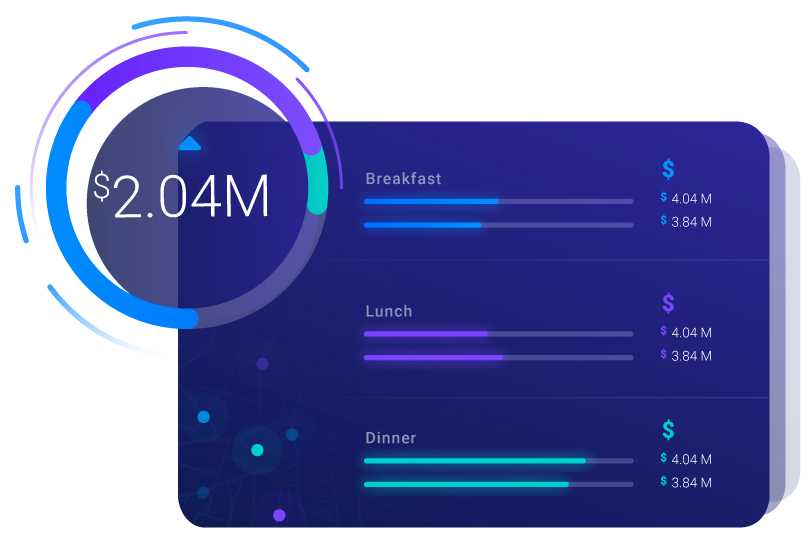
Sales Forecasting
With the power of A.I. and machine learning, getting a sales projection has never been easier. It only takes the drop of a pin on a map to get a real-time forecast based off hundreds of thousands of variables with extreme accuracy.
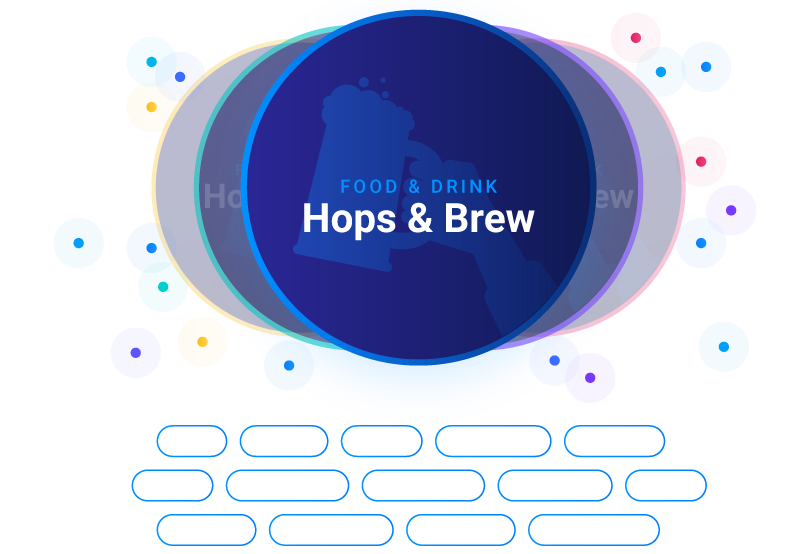
Customer Segmentation
Data partners like Spatial.ai leverage billions of social media conversations to create customer behavioral segments. By geotagging these conversations, brands can visualize where their customers are before and after visiting a location.
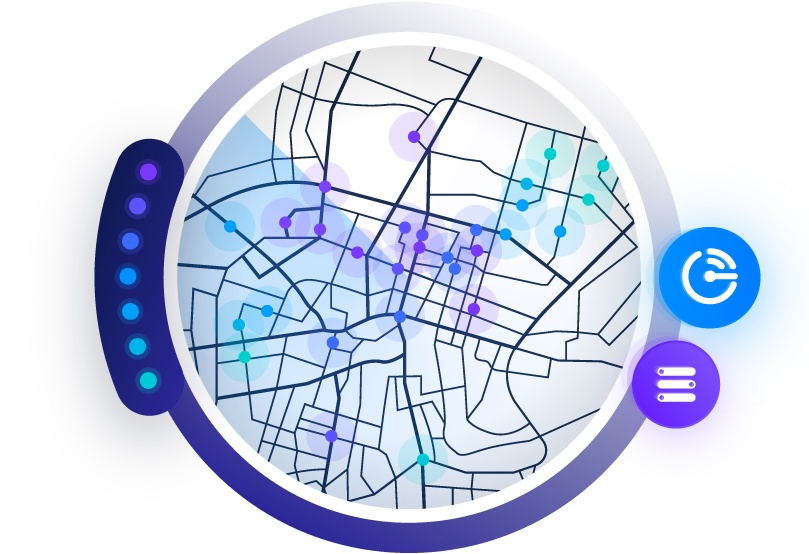
Whitespace Analysis
Want to forecast sales in any geography? Understand how many sites to open in a market? Determine where to open stores? With white space analysis tools brands can get tens of thousands of sales projects across the nation in mere seconds, representing revenue potential across markets. Now it’s possible to test theories from a national level all the way down to the local level.
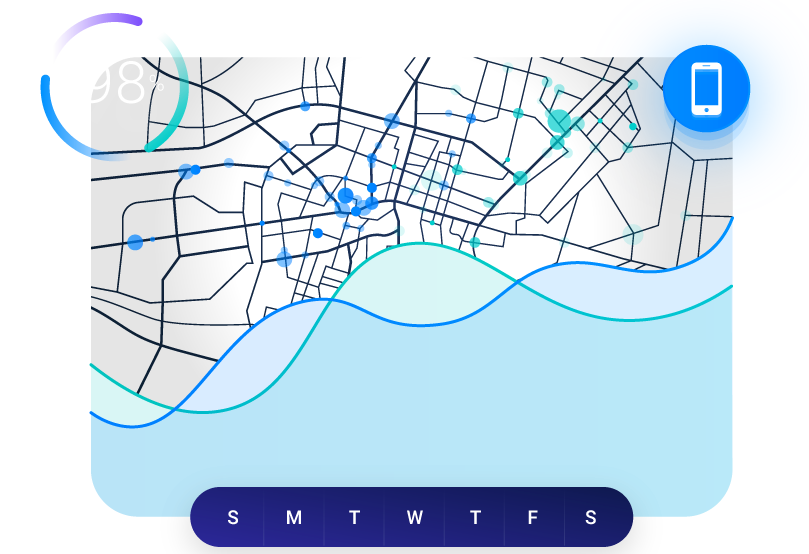
Cannibalization
Brands can easily visualize the overlaps in their trade areas with mobile geofencing technology and path to purchase data. This information plays a vital role when planning out markets, mainly to identify the sales impact between existing locations, new locations, as well as competitor locations.
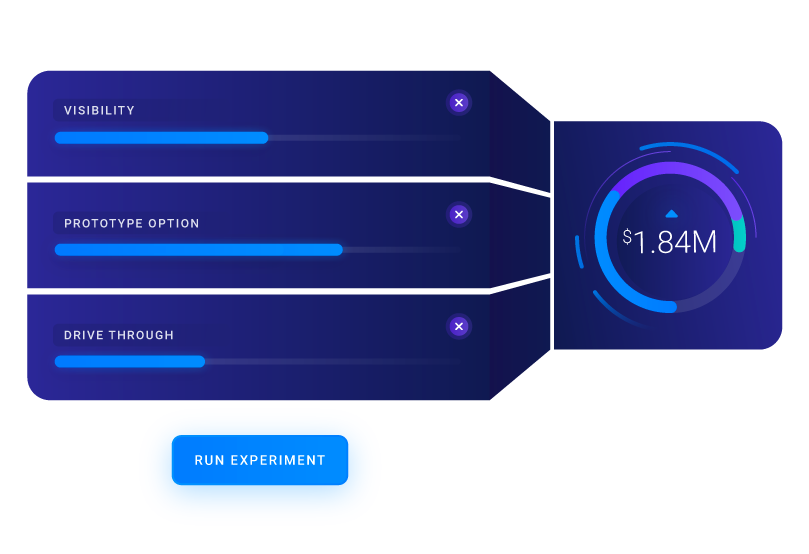
Portfolio Optimization
Brands can easily visualize the overlaps in their trade areas with mobile geofencing technology and path to purchase data. This information plays a vital role when planning out markets, mainly to identify the sales impact between existing locations, new locations, as well as competitor locations.
Chapter 6
Go from good enough to great with Prescriptive-Led Growth
“Good enough” is no longer good enough. Brands have chosen locations in the same way for decades. Often the results were good enough to meet a quota and get to some basic predictive suggestions. But not only can retailers do better with today’s advanced A.I.-driven technology and modern data landscape, they must do better in an era of digital disruption, heightened customer expectations and an ever-faster speed of business. They need to go from “good enough” to great if they want to compete. Those that don’t take advantage of the decision technology of Prescriptive-Led Growth run the risk of losing out to competitors in a highly competitive business environment increasingly reliant on data-driven decisions.
But Prescriptive-Led Growth is not just about technology. In a world where we all can identify our location in seconds on our GPS, the experience of location itself is changing. Brands rightly expect their location-based model to be fully explainable, transparent and with science-backed suggestions. They expect analytics to be a combination of descriptive (what has happened), predictive (what will happen) and prescriptive (what should we do?) outputs.
With a Prescriptive-Led Growth solution, brands should get all of that in real time, without the human error and bias of outside consultants. Yet, brands can use Prescriptive-Led Growth to make entirely human decisions. By importing data sets and delivering results instantly inside of one global model, brands can iterate over and over again, continually training their model. The brand, in effect, becomes part of its own location-based prescription.
Are you ready to become a Prescriptive-Led Growth brand?
A huge part of adopting Prescriptive-Led Growth is getting support to bridge the gap between methods you may have used for years and adopting the mindset and process of a transparent, explainable, real-time prescriptive model. You’re not alone: An excellent customer support team is always available, as you get started on the path to optimal success.
Today’s brands are at a crossroads. But the choice is clear: The only road that meets the transformative future of location intelligence is Prescriptive-Led Growth.
SiteZeus is the only solution that offers the path to Prescriptive-Led Growth. Are you ready to begin your journey? A fast proof-of-concept prescriptive model is yours, just click below to get started.
Recommended Posts
